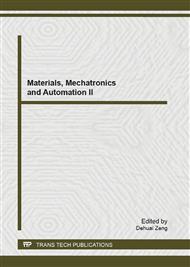p.258
p.267
p.273
p.279
p.284
p.289
p.295
p.300
p.306
Application of Self-Adaptive MGM (1, n) Model in Dam Deformation Prediction
Abstract:
Considering the characteristics of randomness and uncertainty of dam system and the lack of safety monitoring data in some projects, a grey forecasting method based on self-adaptive MGM (1, n) was proposed in this paper to predict the dam deformation. Firstly, theory of the traditional MGM (1, n) model and the parameter estimation method were introduced. On the basis of this, add these forecasted values into the original data group and eliminate the oldest information, the self-adaptive MGM (1, n) model could be established. This paper employs this improved approach in the dam deformation of an arch dam. By predicting the dam deformation in next 5 days, the validity of such method was proved. Compared with GM (1, 1) model and conventional MGM (1, n) model, the experimental results indicate that the forecasting performance is significantly superior to that of the above mentioned two methods.
Info:
Periodical:
Pages:
284-288
Citation:
Online since:
August 2013
Authors:
Price:
Сopyright:
© 2013 Trans Tech Publications Ltd. All Rights Reserved
Share:
Citation:


